In terms of land area, Australia is just slightly smaller than the United States contiguous 48 states. The fact that such a massive landmass is home to some of the world’s most bizarre places and species is, maybe, not so unexpected. Ayers Rock and the Sydney Opera House are just two of Australia’s numerous famous monuments. While these are among the most visited sights in Australia, there are many more that may not get as much attention but are just as remarkable.
10. Cable Beach, Broome
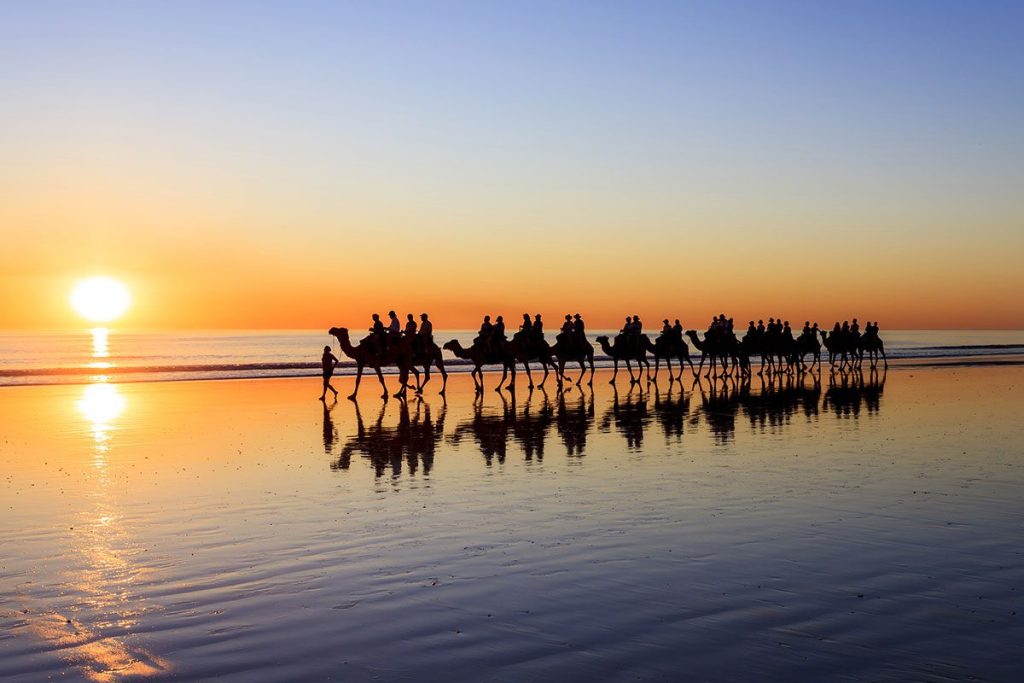
: A stunning sunset view of camels on the beach in Broome, Western Australia. Image source: bmphotographer/Shutterstock.com
Broome, Western Australia is home to Cable Beach, which is often regarded as the best tourist attraction in the whole state. It’s a gorgeous beach that draws visitors with its white beaches, breathtaking sunsets, and the clear blue seas of the Indian Ocean. You may also take a camel ride on the sand at Cable Beach, making it an even more unique attraction. Those who would rather not go over the dunes on foot may drive a four-wheel-drive car across the desert.
9. Fraser Island
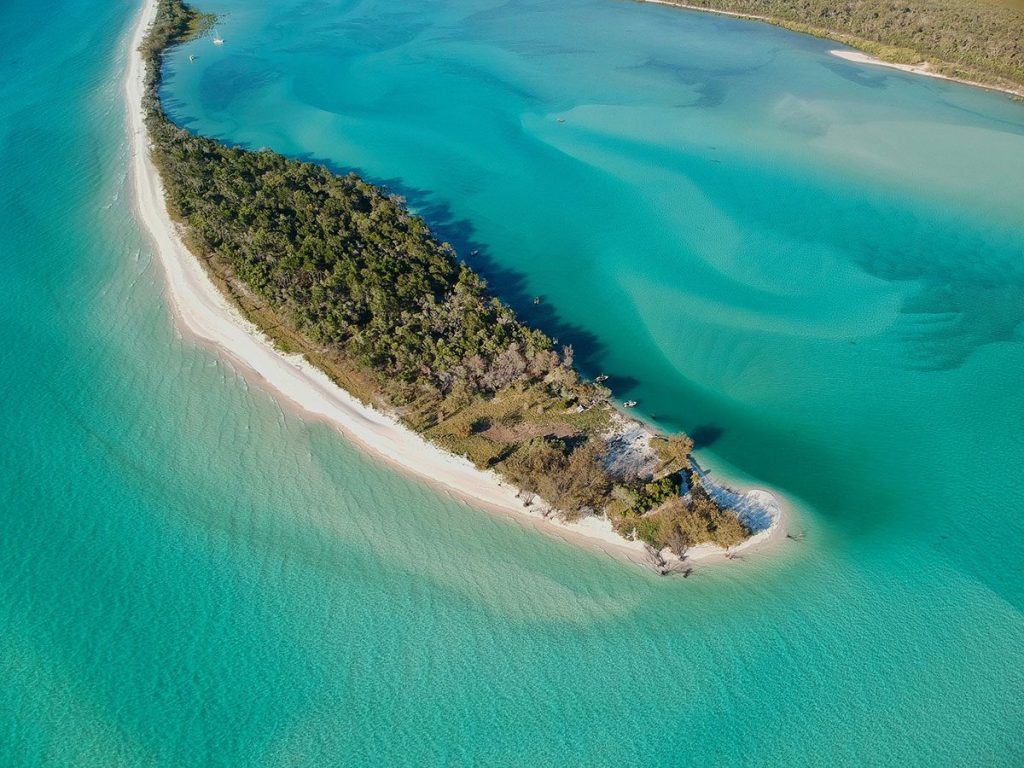
A scenic view of Fraser Island, located in Queensland, Australia. Image source: Guillem Lopez Borras/Shutterstock.com
Located in Queensland, this stunning island is home to lush woods, rolling dunes, more than a hundred lakes, and picturesque cliffs of varying shades of sand. The world’s biggest sand island, Fraser Island, is located only a short boat ride from Hervey Bay. Because they have not been exposed to dogs as much as their mainland counterparts, the dingoes who live on this island are often regarded as some of the purest in all of Australia.
8. Great Ocean Road
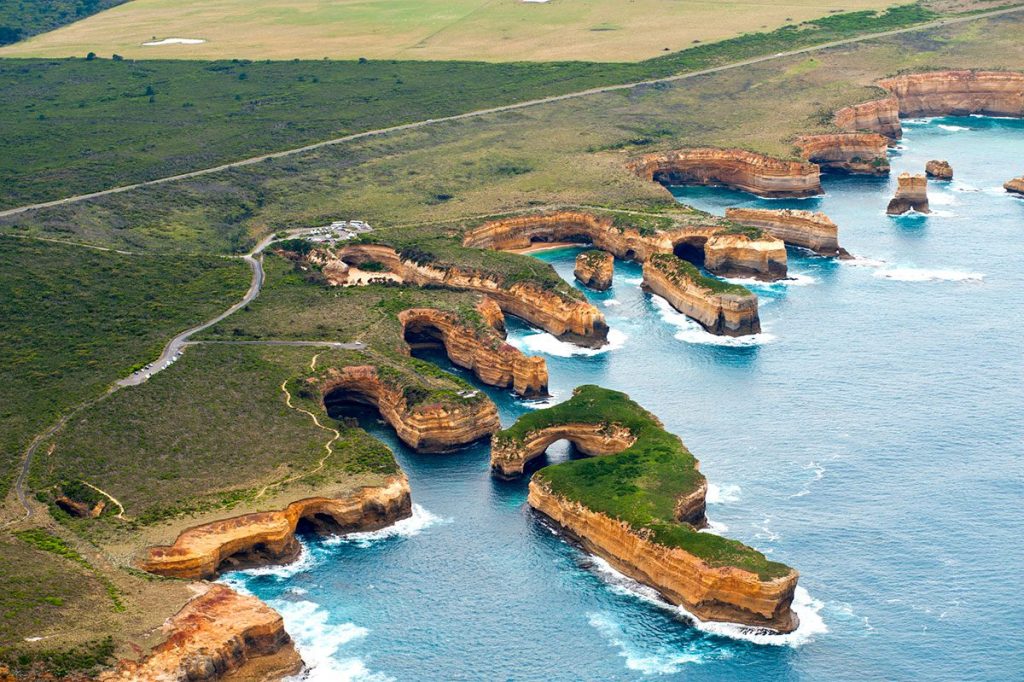
A stunning view of the Twelve Apostles on the Great Ocean Road, Australia. Image source: Production Perig/Shutterstock.com
One of Australia’s most stunning highways is the Great Ocean Road in Victoria. It is around 100 kilometers (60 miles) from Melbourne to Torquay, where the starting point of this 243-kilometer (151-mile) trip begins. The Great Ocean Road winds its way along the picturesque southwest coast of Victoria, Australia, offering some of the country’s most breathtaking views along the way. This includes the picturesque limestone stack formations known as The Twelve Apostles, which rise from the ocean near Port Campbell National Park. Some of the Great Ocean Road’s many attractions include the many opportunities to see native Australian animals, including kangaroos, fur seals, and emus.
7. Purnululu National Park
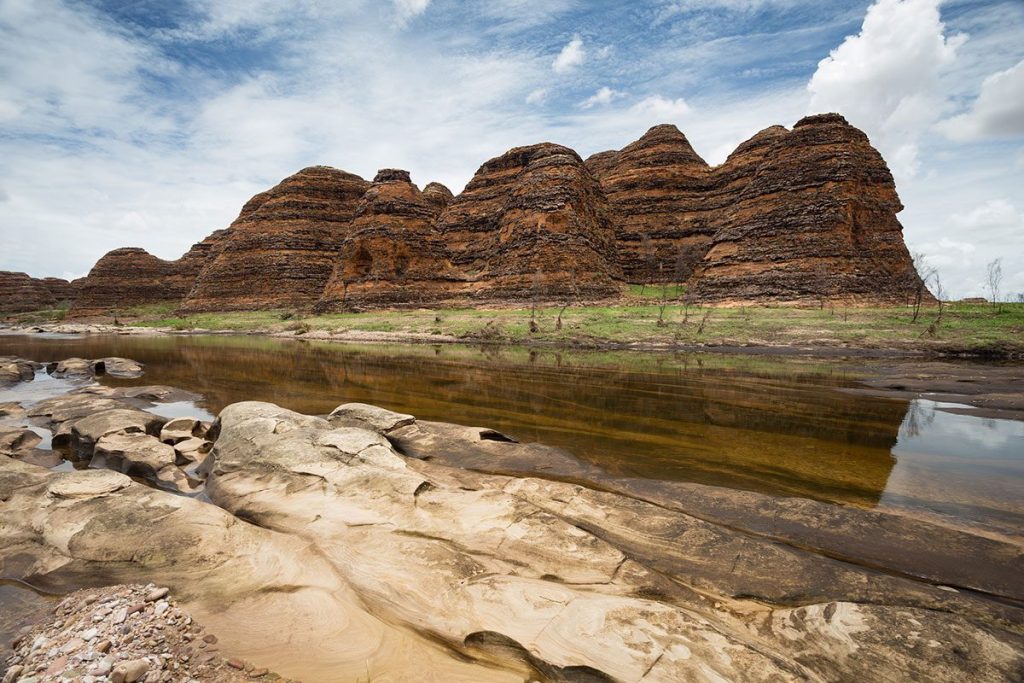
stunning view of the Bungle Bungle Range in Purnululu National Park, Western Australia. Image source: Philip Schubert/Shutterstock.com
Bungle Bungle Range, found in Purnululu National Park in Western Australia, is one of Australia’s most unusual tourist sites. These sandstone domes, with their distinctive orange and black stripes, are sometimes likened to enormous beehives. It was hard until lately that the location became well-known outside the local farming community and Aboriginal Australians. In fact, it wasn’t until a documentary was shot there in 1983 that the region gained widespread attention. Cathedral Gorge, a breathtaking natural amphitheater, may be seen inside the park as well. Due to the park’s isolated location, all supplies for the park’s two campsites must be brought in by guests and taken back out by them.
6. Blue Mountains National Park
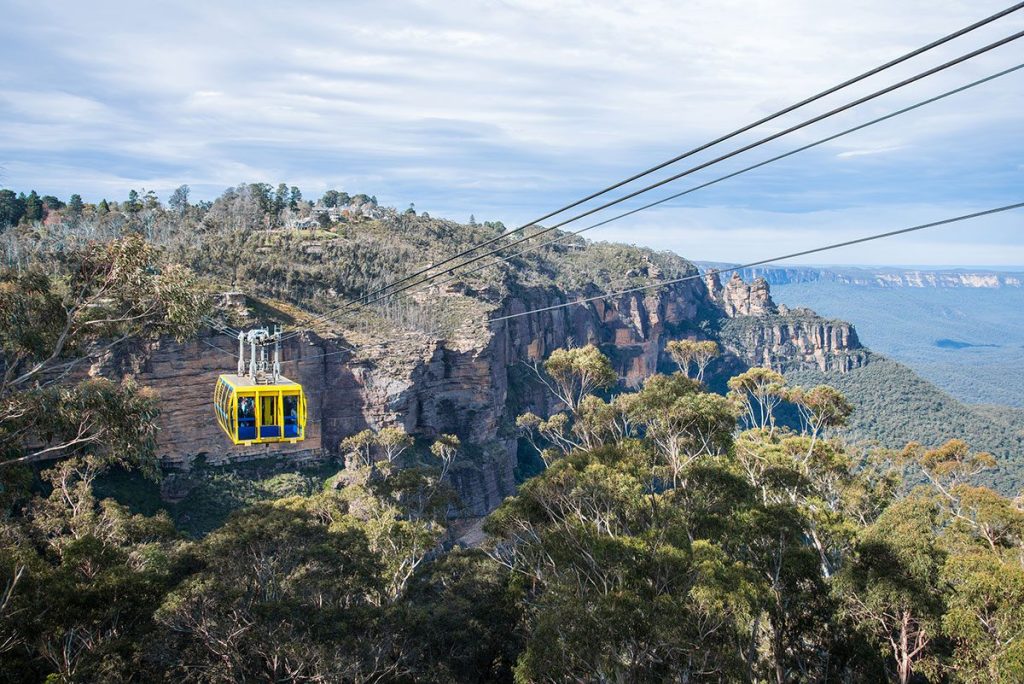
: A scenic view of the cable skyway tour at Blue Mountains National Park, New South Wales, Australia. Image source: Boyloso/Shutterstock.com
About 80 kilometers (50 miles) west of Sydney in New South Wales is where you’ll find the Blue Mountains National Park. The park’s proximity to Australia’s largest metropolis has made it a popular destination for day trips from the city. The Three Sisters, a rocky outcrop that rises almost 900 meters (3000 feet) above the Jamison Valley, is the park’s most recognizable feature.
The Blue Mountains National Park is a popular destination for outdoor enthusiasts since it is home to a wide variety of terrain suitable for hiking, mountain biking, and other high-adrenaline pursuits. If you’d rather take it easy when visiting Blue Mountains National Park, the world’s steepest passenger train, the Katoomba Scenic Railway, has glass-roofed carriages where you may ride.
5. Whitsunday Islands
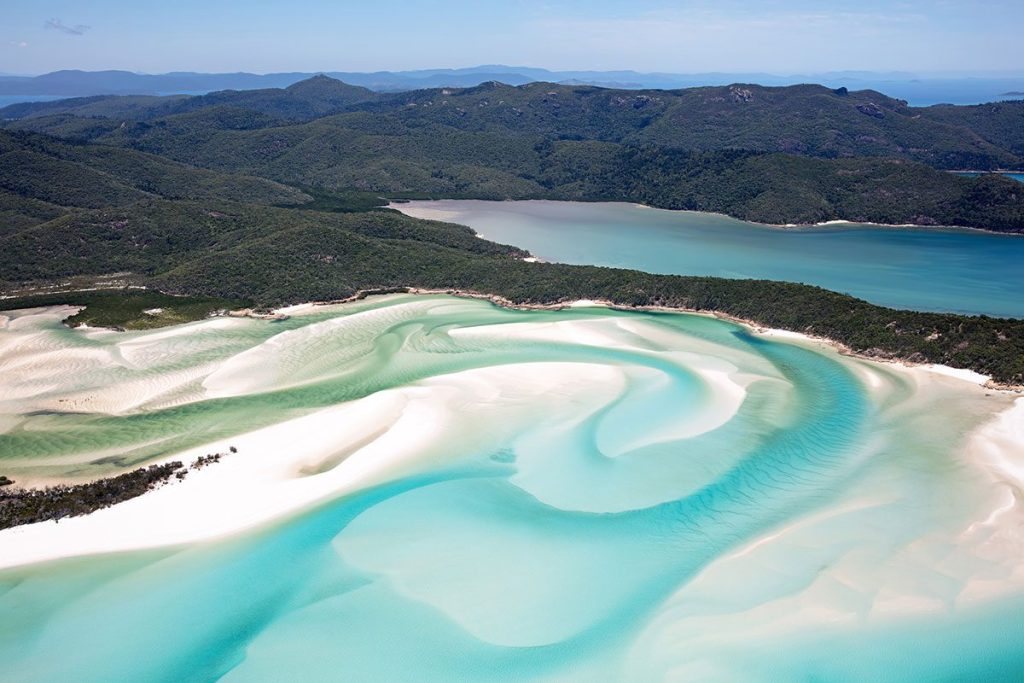
Aerial view of Whitehaven Beach on Whitsunday Island, Australia. Image source: Tanya Puntti/Shutterstock.com
Located in the midst of the Great Barrier Reef off the coast of Australia, this group of 74 islands is an excellent starting point for anyone hoping to dive into the vibrant marine life that calls these waters home. The majority of the Whitsunday Islands are uninhabited, but seven of them feature world-class resorts, such as the exclusive One&Only on Hayman Island, a favorite of Hollywood A-listers and the ultra-wealthy. Whitehaven Beach, in the Whitsunday Islands, is famous for its pristine white beaches and idyllic setting. For individuals who want to spend their holiday relaxing on a beautiful tropical island or who want to spend hours underwater snorkeling or scuba diving, these islands are an excellent option.
4. Kakadu National Park

Scenic view of the wetlands in Kakadu National Park, Northern Territory, Australia. Image source: Umomos/Shutterstock.com
Kakadu National Park is Australia’s biggest and is located in the Northern Territory, approximately three hours north of Darwin. It is thought that some of the Aboriginal rock paintings in Kakadu National Park are as ancient as 20,000 years. The park is also inhabited by a wide variety of fauna, such as wallabies, dingoes, and crocodiles. To add to that, Kakadu National Park is a birdwatcher’s paradise since it is home to one-third of Australia’s bird species.
3. Uluru/Ayers Rock
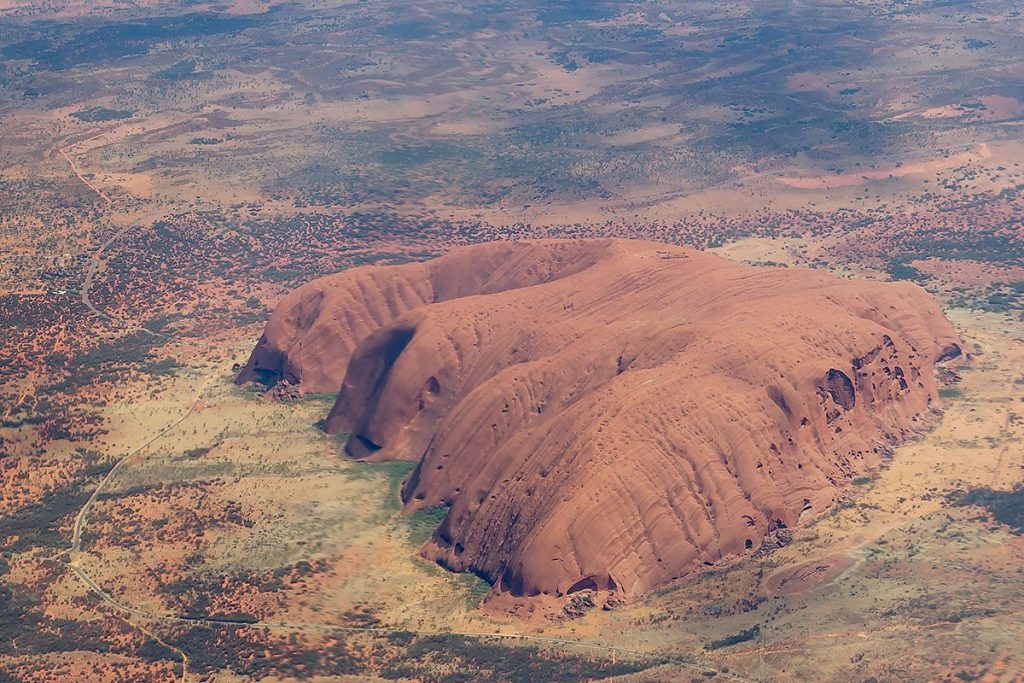
Iconic Uluru (Ayers Rock) in the Northern Territory, Australia. Image source: Marco Taliani de Marchio/Shutterstock.com
Ayers Rock, one of the biggest monoliths in the world, is a popular tourist destination in Australia. This massive sandstone monolith in the Northern Territory’s Uluru-Kata Tjuta National Park is over 340 meters (1,100 ft) in height. An unusual feature of the rock is the dramatic transformation it undergoes from terracotta at sunrise to blue, violet, and crimson at dusk. The local Aboriginal people, known as Anangu, name the rock Uluru and view it as a holy spot.
2. Great Barrier Reef
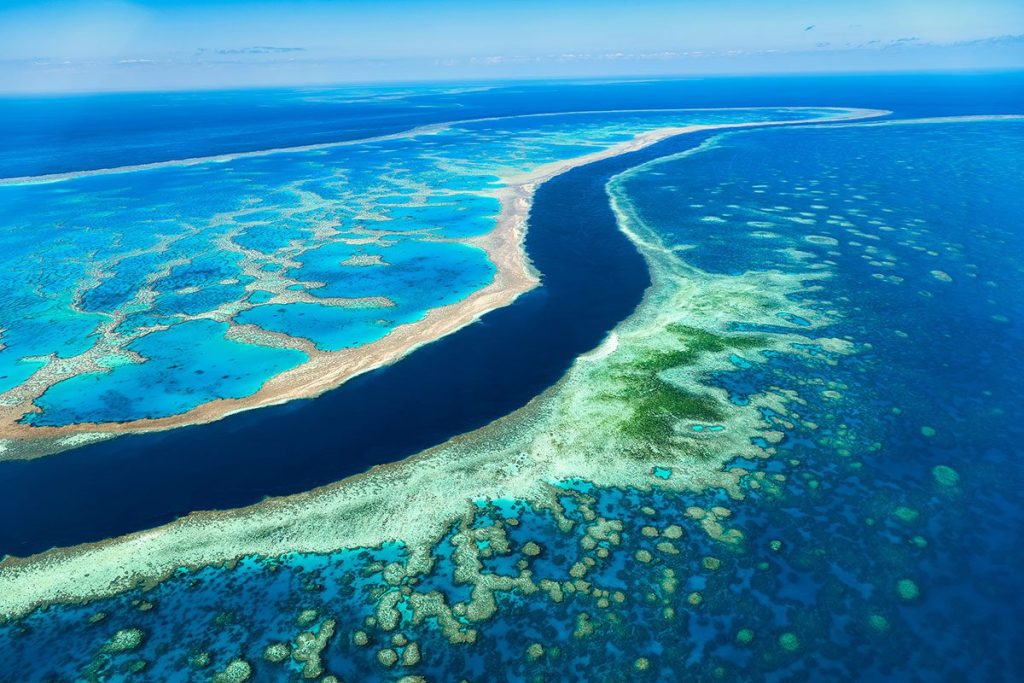
Aerial view of the Great Barrier Reef in the Whitsunday Islands, Queensland, Australia. Image source: marcobrivio.photography/Shutterstock.com
The Great Barrier Reef is the biggest reef system in the world and a popular destination for scuba divers and other underwater explorers. The Great Barrier Reef is a massive ecosystem consisting of thousands of individual reefs and islands in the Coral Sea. Taking one of the many boat trips that depart from the northern coast of Queensland is the best way to see the reef. Cairns is the most popular starting point for trips to the reef, but other cities in the region also have cruise companies.
1. Sydney Opera House
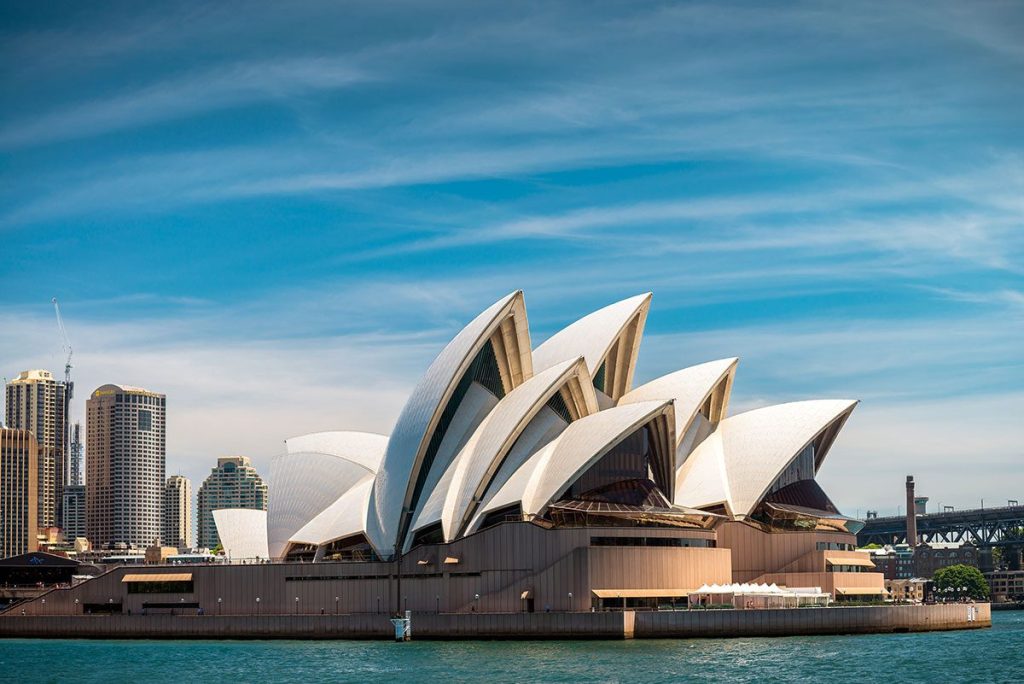
The iconic Sydney Opera House in Sydney Harbor, Australia. Image source: myphotobank.com.au/Shutterstock.com
The Sydney Opera House, a landmark of 20th-century architecture, was conceived by and constructed by architect Jørn Utzon in the likeness of a massive sailing ship. More than 1,500 concerts a year are held in its various locations. One of Australia’s most recognizable buildings, the Sydney Opera House, is situated on the waterfront of Sydney Harbour, next to the Royal Botanic Gardens.



